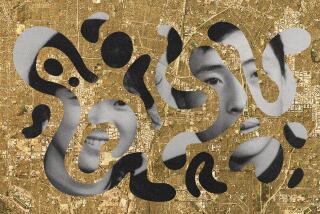Armenian Population Smaller Than Pasadena Survey Expected : Demographics: Their annual average income is $39,000 a year and 52.9% own their homes.
- Share via
A ground-breaking survey of Pasadena’s Armenian-Americans revealed a smaller and wealthier population than anticipated, but an expected wave of refugees from Soviet Armenia and Lebanon could change the demographics significantly, an official of the survey firm told the Board of Directors.
Although previous estimates of Pasadena’s Armenian-American population had run as high as 15,000, a survey completed by Whittier-based SC Communications Group tallied only 6,850 living in Pasadena, 5.16% of the city’s estimated 132,750 residents.
“I’m sure some people were disappointed,” said Serge Samoniantz, president of SC Communications, during a report at the Board of Directors meeting. “But the only thing I can say to that is the numbers don’t lie.”
The survey indicated that the Armenian-American community in Pasadena has a “solid, middle-class background,” Samoniantz said, with 37% attending college or holding at least a bachelor’s degree and 52.9% owning homes. The average yearly household income is $39,000.
The profile of the Armenian-Americans, which cost the city more than $98,000, was undertaken to find figures on which to base affirmative-action hiring goals for Armenian-Americans. The 1990 U.S. Census does not tally separate figures for Armenians.
In 1985, the city designated the group a “protected class,” along with blacks, Latinos, Asians and American Indians. Only 15 Armenian-Americans are employed in the city’s work force of 1,600, making up less than 1% of the total, city officials said.
City Director Chris Holden said the survey results indicate that the city’s Armenians constitute a “model community” but said their relatively well-off status in comparison to other “protected class” groups made him question whether Armenians should be included in the city’s affirmative-action programs.
Samoniantz responded that the financially healthy Armenian-American community could change in the next few years. He pointed to survey indications of a wave of Armenian immigrants to Pasadena, escaping Soviet Armenia and war-torn Lebanon. Last year’s 300 Armenian immigrants accounted for half of the city’s total population growth forecast by the California State Department of Finance, Samoniantz said.
“More and more Soviet Armenians are coming directly to Pasadena,” Samoniantz told the board. Pasadena’s Armenian community has typically been composed of Armenians from Lebanon and Syria, with Soviet Armenians generally settling in Hollywood or Glendale for an average of three years before moving to Pasadena, he said.
The direct arrivals, however, could have a “snowballing effect,” Samoniantz said, because new immigrants tend to settle among friends and relatives.
“The more you have, the more are likely to come,” he said. Many newer arrivals, unlike past Armenian immigrants, arrive destitute, some with law and medicine degrees rendered worthless because they lack California credentials.
By culling city utility service lists and membership lists from 14 Armenian groups, Samoniantz determined that 1,895 Armenian-American households existed in Pasadena. Bilingual survey packets were mailed. They included two questionnaires, a household form with nine questions and individual forms with 17 questions for each household member.
Despite an accompanying media blitz urging Armenian-Americans to respond, nearly 20% refused to participate. Samoniantz attributed older Armenians’ reluctance to a mistrust of governments in general because of past oppressive regimes under which they have lived.
The survey data revealed that Pasadena’s Armenian-Americans are relatively young, with a median age of 35; have a divorce rate of only 2%; have households of 3.6 people, larger than the U.S. average of 2.2 people; and are employed mainly in white-collar occupations, with 45% in such job classifications as office and clerical, banking, management, engineering, accounting and insurance.
The survey also revealed that 8% are unemployed; 10% consider themselves physically or mentally disabled; 86.8% speak Armenian as their primary language, and 83% are foreign-born, with 60.3% from Middle Eastern countries and 16.8% from Soviet Armenia or other parts of the Soviet Union.
Samoniantz called the survey the first of its kind in the United States.
More to Read
Sign up for Essential California
The most important California stories and recommendations in your inbox every morning.
You may occasionally receive promotional content from the Los Angeles Times.










